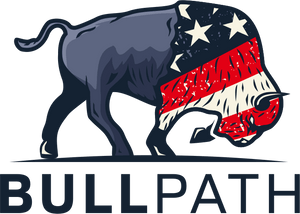Introduction:
In the vast tapestry of conservation efforts, an unlikely hero emerges: the whitetail deer hunter. Beyond the camo-clad figures and the thrill of the chase lies a compelling story of stewardship and ecological balance. This article delves into the ways in which responsible whitetail deer hunting not only helps manage deer populations but also fosters a harmonious ecosystem that benefits a variety of wildlife.
Population Management and Predator Control:
Whitetail deer populations, if left unchecked, can wreak havoc on ecosystems through overgrazing and habitat degradation. Enter the conservation-minded hunter. These individuals operate within carefully regulated seasons and quotas, playing a vital role in managing deer numbers. Moreover, hunters often find themselves serving as stewards against unchecked predators like coyotes, ensuring a delicate equilibrium between prey and predator.
The Hunter's Vigilance Against Predators:
In the wild, balance is key. Responsible hunters, in addition to pursuing whitetail deer, are often on the lookout for predators like coyotes. By keeping these predator populations in check, hunters actively contribute to maintaining a balanced ecosystem. This vigilance not only safeguards deer populations but also protects a myriad of other species that thrive in the same habitat.
Private/Public Land Conservation:
Beyond the vast public lands, private landowners play a pivotal role in conservation efforts. Hunters who steward private lands go above and beyond simply tracking and harvesting deer. Many of these conservation-minded individuals actively work to build habitats that attract whitetail bucks. This isn't merely about bagging a trophy; it's about creating an environment that nurtures a thriving and diverse ecosystem.
For public land, the same thing occurs. It is up to the state to decide whether or not something needs cleaned up or fixed within the ecosystem. Besides the role of the state to make sure things are in check, the public land hunter is the most important figure for any public land. Not only do they pay for hunting licenses and tags that fund public land projects, but they also help cleaning up any land voiding the area of any trash or possible poacher. yes, there are some bad apples within the hunting realm, but the majority is truly looking out for nature.
On the flip side of the licenses and tags where the money is used for funding, several hunting companies also uses certain percentages of profit to be donated to outside organizations to help maintain any public land. If it wasn't for the hunter, lands would be destroyed, and you wouldn't be able to go out and enjoy yourself in the nature.
Building Ecosystems:
Private land hunters understand the importance of creating habitats that cater to the needs of whitetail deer. This often involves thoughtful landscaping and habitat management practices. Planting native vegetation, maintaining water sources, and establishing cover areas contribute not only to attracting bigger deer but also to providing refuge and sustenance for a host of other wildlife species, from songbirds to small mammals.
The Ripple Effect:
What's fascinating is the ripple effect of these habitat-building efforts. As private land hunters cultivate environments that appeal to whitetail bucks, they inadvertently create havens for a diverse array of flora and fauna. A flourishing deer habitat becomes a thriving ecosystem, with benefits cascading to various species, enriching biodiversity and ensuring the vitality of the natural world.
Conclusion:
In the grand scheme of conservation, the role of whitetail deer hunting extends far beyond the act of pursuing game. Responsible hunters serve as stewards of the land, actively participating in population management, predator control, and habitat creation. By understanding and appreciating the multifaceted contributions of hunters, we can work towards a conservation model that embraces the delicate dance between predators and prey, fostering healthy ecosystems for generations to come. Whitetail deer hunting, when approached with respect for nature and a commitment to sustainability, emerges not as a threat but as a key player in the intricate web of wildlife conservation.

